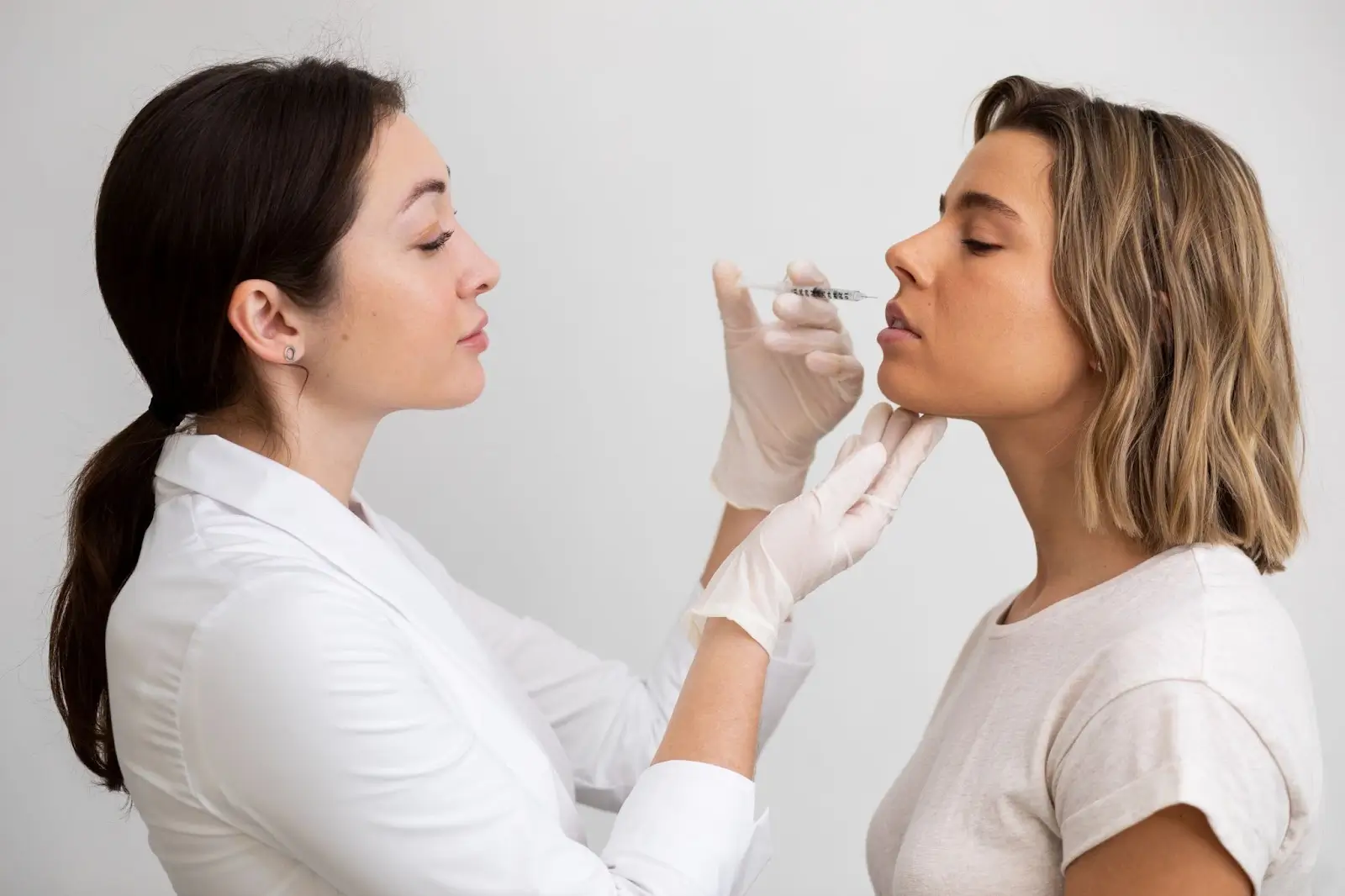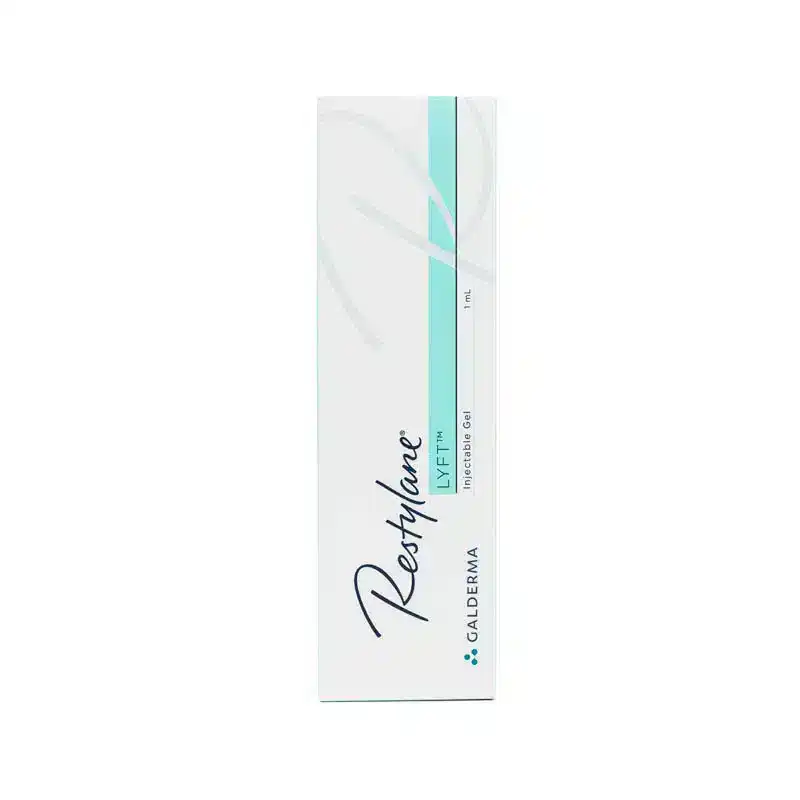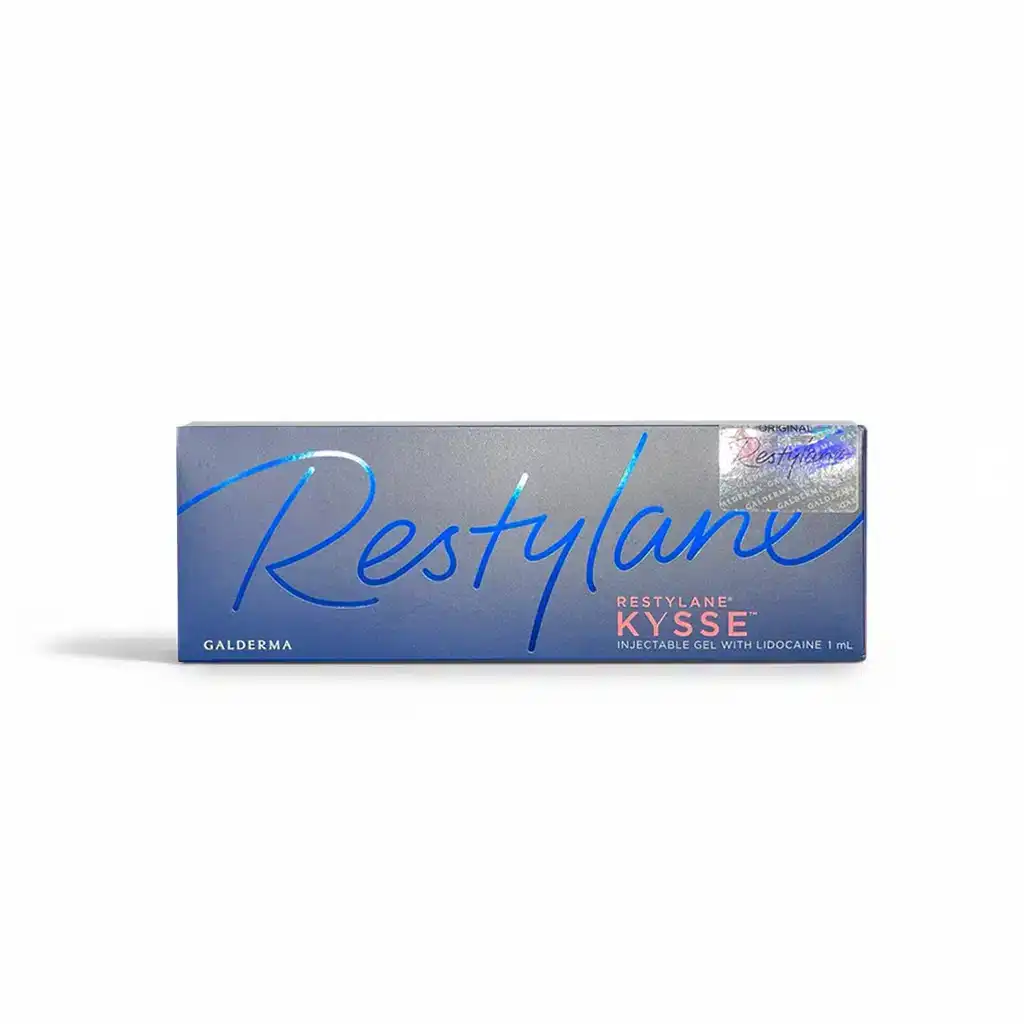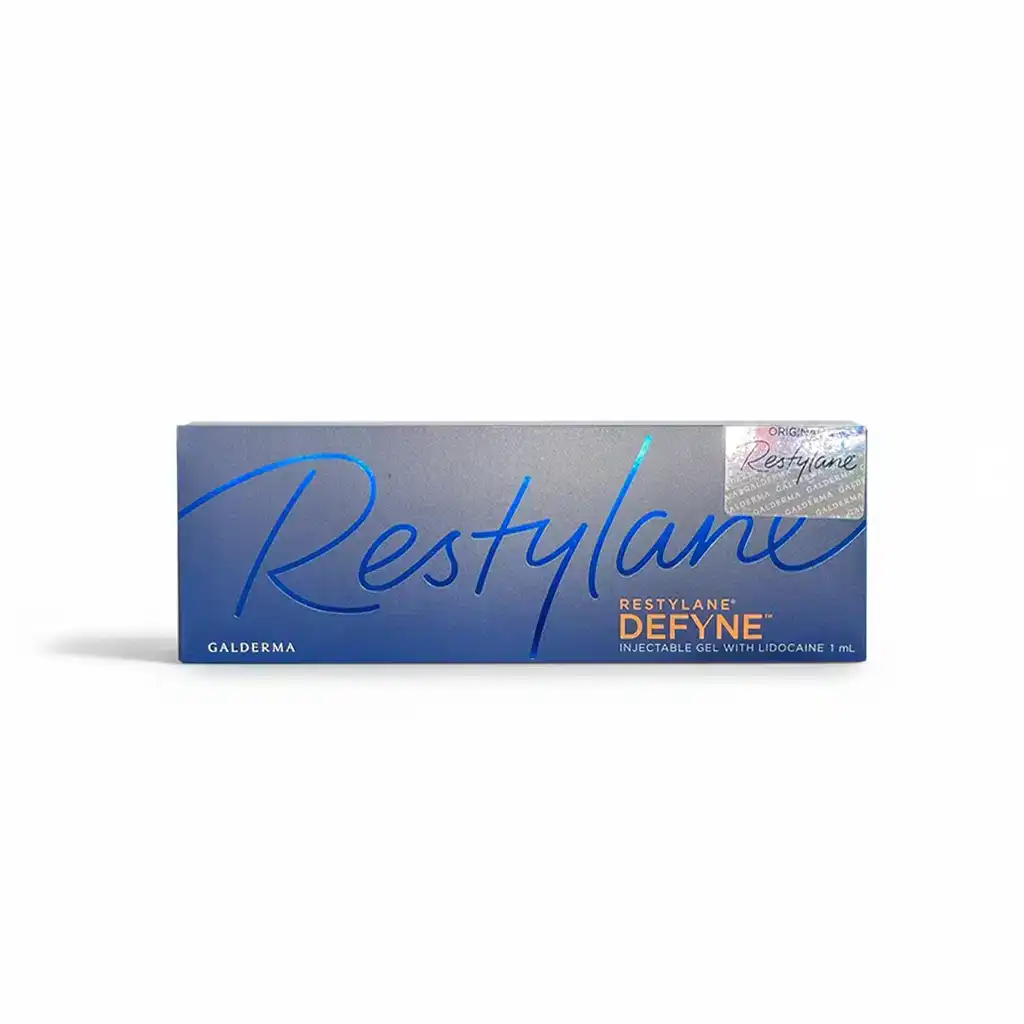Only for Licensed Professionals
Only for Licensed Professionals
.webp)
Sculptra vs Restylane – Differences Explained
Nina Petrovic
Last Updated On: August 14, 2025
When it comes to dermal fillers, there are a variety of options available, each with its own set of benefits, compositions, and mechanisms of action. Clinical research and the hands-on experience of practitioners show that the composition and longevity of these fillers can make a significant difference in patient outcomes. Among the most popular choices are Restylane and Sculptra, two powerful options that cater to different aesthetic goals but work in distinct ways.
Restylane, a hyaluronic acid (HA)-based filler, offers an immediate solution to volume loss by attracting and retaining moisture, creating a plump, natural appearance right after treatment. On the other hand, Sculptra, which contains poly-L-lactic acid (PLLA), takes a more gradual approach by stimulating collagen production over time. This slower process can lead to more subtle, long-term results.
In this article, we’ll break down the key differences between Sculptra and Restylane, from how they work and the types of results they deliver, to which might be the right choice for your specific aesthetic goals.
Key Takeaways
- Sculptra stimulates collagen production over time, offering long-term results that last up to 2 years or more. It’s ideal for those seeking gradual rejuvenation and improvement in facial volume.
- Restylane provides immediate volume and smooths out wrinkles, with results lasting 6 to 12 months, and up to 18 months in certain areas.
- Sculptra requires multiple treatments (3-4) spaced 4-6 weeks apart to achieve optimal results, making it a better choice for those who want gradual improvement.
- Restylane is perfect for targeted areas like lips, nasolabial folds, and tear troughs, providing instant volume restoration with more frequent touch-ups required.
- Sculptra is ideal for overall facial volume restoration, while Restylane is better for detailed, precise sculpting.
- Both fillers have their risks: Sculptra may cause nodules if improperly injected, while Restylane carries a risk of vascular occlusion. Both require skilled injectors.
- Choosing between Sculptra and Restylane depends on whether you seek gradual, long-lasting results or instant, targeted volume enhancement.
About: Operating since 2016, Med Supply Solutions is known for being one of the industry’s top and trusted suppliers of cosmetic and viscosupplementation products. If you’re looking to buy Restylane online, contact our sales department for more information.
Tier pricing
Save 5.92%
6 or more
$159.00 each
Save 8.88%
11 or more
$154.00 each
Save 11.83%
21 or more
$149.00 each
Tier pricing
Save 5.59%
6 or more
$169.00 each
Save 8.38%
11 or more
$164.00 each
Save 11.17%
21 or more
$159.00 each
Tier pricing
Save 4.78%
6 or more
$199.00 each
Save 7.18%
11 or more
$194.00 each
Save 9.57%
21 or more
$189.00 each
Sculptra vs Restylane: Composition & Mechanisms of Action

Sculptra is composed of poly-L-lactic acid (PLLA), a biocompatible synthetic polymer that works by stimulating the body’s natural collagen production. Unlike traditional dermal fillers, which provide immediate volume, Sculptra gradually enhances skin texture, firmness, and volume over several months.
The process of collagen induction can result in long-term structural support for the skin, offering a more natural and subtle rejuvenation. While it doesn’t deliver immediate results, it provides long-lasting benefits that continue to improve over time. It is often used for generalized facial volume loss due to aging (off-label uses in the U.S. for areas like the cheeks and nasolabial folds).
On the other hand, Restylane is made from stabilized hyaluronic acid (HA), a naturally occurring substance in the skin. HA binds with water to attract moisture and provide immediate volume, smoothing out wrinkles and restoring lost volume right after injection. This instant volumizing effect is one of Restylane’s standout features, making it ideal for patients who seek immediate results.
Restylane fills spaces beneath the skin, offering a more physical approach compared to Sculptra’s biological process of stimulating collagen production.
The key distinction lies in Sculptra’s gradual collagen-building effect, which works over time, versus Restylane’s immediate volumizing action. This difference affects not only how quickly results are noticed but also how long the filler’s effects last, influencing the choice depending on a patient’s aesthetic preferences.
Onset & Duration of Effect

The onset and duration of results from Sculptra and Restylane are key factors in selecting the right filler for a patient’s needs. The unique mechanisms of each filler affect how quickly results appear and how long they last.
Sculptra
- Results gradually develop over 3 to 6 months as collagen production is stimulated.
- Multiple sessions (usually 3 to 4 treatments) are required, spaced about 4 to 6 weeks apart.
- The benefit is long-lasting—Sculptra can last up to 2 years or more in some patients. However, outcomes can vary, and some may need touch-ups sooner depending on individual responses.
- Ideal for those looking for subtle, long-term rejuvenation that continues to improve over time, even after the treatment is complete.
Restylane
- Provides immediate results, offering instant volume and smoothing out wrinkles right after treatment.
- The duration typically ranges between 6 and 12 months, depending on the formula and treated area.
- Certain areas, like the cheeks, may maintain results for up to 18 months, particularly in low-mobility zones.
- If you’re wondering how long Restylane lasts in a specific area, it’s essential to consider both the formula used and the area treated.
These differences highlight why Sculptra is preferred for gradual, long-lasting rejuvenation, while Restylane is perfect for those desiring immediate volume restoration with more frequent touch-ups.
Comparing Treatment Areas and Techniques for Sculptra vs Restylane
The choice between Sculptra and Restylane also depends on the treatment areas and the techniques used to administer them. Each filler excels in different areas of the face and requires distinct approaches for optimal results.
Sculptra is particularly effective for large-volume restoration and skin rejuvenation. It’s often used to address the following:
- Deep facial folds
- Hollow cheeks
- Facial volume loss due to aging
The technique for Sculptra involves multiple small injections that are dispersed across broad areas of the face. This gradual approach to volume restoration helps rebuild the skin’s structure and provides a natural, all-over rejuvenation rather than a targeted correction. Sculptra is ideal for patients who want a widespread volumizing effect over time rather than quick, specific sculpting.
On the other hand, Restylane is highly versatile and well-suited for more delicate, precise areas that require targeted volume replacement. It is commonly used in areas like the lips, nasolabial folds, tear troughs, and for smoothing out fine lines.
The Restylane technique can range from using microcannulas to fine needles, depending on the area being treated. This allows for precision in delivering volume where it’s needed most, whether it’s enhancing lip volume or adding contour to the cheeks.
Sculptra vs Restylane: Risks, Safety, and Practical Use
While both Sculptra and Restylane are generally safe and effective, understanding their risks and safety profiles is crucial for selecting the right treatment.
Sculptra
Sculptra treatments have a risk of small nodules or lumps forming if injected improperly or in overly concentrated areas. These nodules are usually palpable, not visible, and typically resolve over time. Clinicians should ensure proper reconstitution, place the filler deep within the skin, and encourage post-treatment massage to help distribute the filler evenly.
Some common side effects of Sculptra treatment include temporary swelling, redness, and bruising, which usually subside within a few days.
Restylane
Restylane has a rare but serious risk of vascular occlusion, which can lead to tissue damage if not immediately addressed. This underscores the importance of choosing an experienced injector with detailed knowledge of facial anatomy. An added benefit of Restylane is its reversibility—if there are any unwanted results, hyaluronidase can be used to dissolve the filler.
Both products should not be injected intravascularly, and treatment should be avoided in areas with active skin infection or inflammation. Despite these risks, when administered by trained professionals, both fillers offer safe and effective solutions for facial rejuvenation.
Conclusion
Choosing between Sculptra and Restylane depends on your aesthetic goals and how you want your treatment experience to unfold. If you’re looking for gradual, long-term collagen renewal and volume restoration, Sculptra is a great option. If you prefer immediate results with a shorter maintenance cycle, Restylane provides a versatile solution. Both options are effective, but understanding their distinct characteristics helps guide the decision-making process.
Consulting with an experienced provider ensures that the right treatment is chosen to match your unique needs and goals, ultimately delivering a tailored and natural outcome.
FAQs
1. How soon will I see results with Sculptra compared to Restylane?
Sculptra’s effects appear gradually over several months due to collagen stimulation, while Restylane provides instant volume correction visible immediately post-injection.
2. Can Sculptra and Restylane be used together?
Yes, some practitioners combine both treatments to benefit from immediate volume restoration and longer-term collagen stimulation for comprehensive facial rejuvenation.
3. Are there any major safety concerns?
Both are generally safe. Sculptra may cause small nodules if not injected properly. Restylane’s risks include rare vascular complications, but it is reversible with hyaluronidase.
4. How long will Restylane last compared to Sculptra?
Restylane typically lasts 6–12 months, depending on the product and area treated. Sculptra results can last up to 2 years or more due to its collagen-building effects.
References
Hong GW, Wan J, Yoon SE, Wong S, Yi KH. Conditions to consider when choosing fillers. J Cosmet Dermatol. 2025;24(3):e70075. doi:10.1111/jocd.70075. https://europepmc.org/article/pmc/11892339
Liu MH, Beynet DP, Gharavi NM. Overview of deep dermal fillers. Facial Plast Surg. 2019;35(3):224-229. doi:10.1055/s-0039-1688843. https://www.thieme-connect.de/products/ejournals/abstract/10.1055/s-0039-1688843
Products
Cart
Log In
Newsletter
Subscribe for exclusive offers and updates on new arrivals
Share feedback at:
Working Hours
MON - SUN 9AM to 6PM EST
The Most Popular Brands
Med Supply Solutions
Support
Secure checkout is guaranteed with full adherence to PCI DSS payment standards.
Products listed here are guaranteed authentic and manufacturer-sourced.
Pay easily with trusted providers


*Google and Apple Pay are currently only available via a direct link provided by your account manager.
Copyright 2025. Med Supply Solutions


